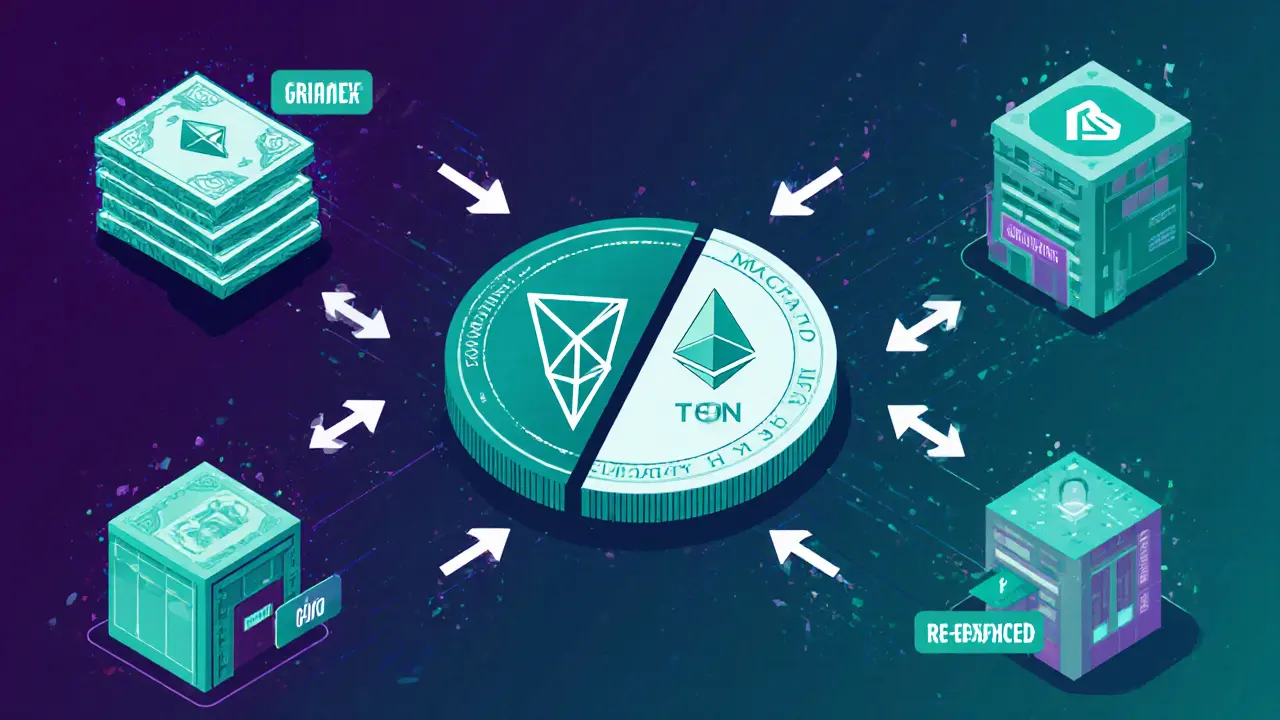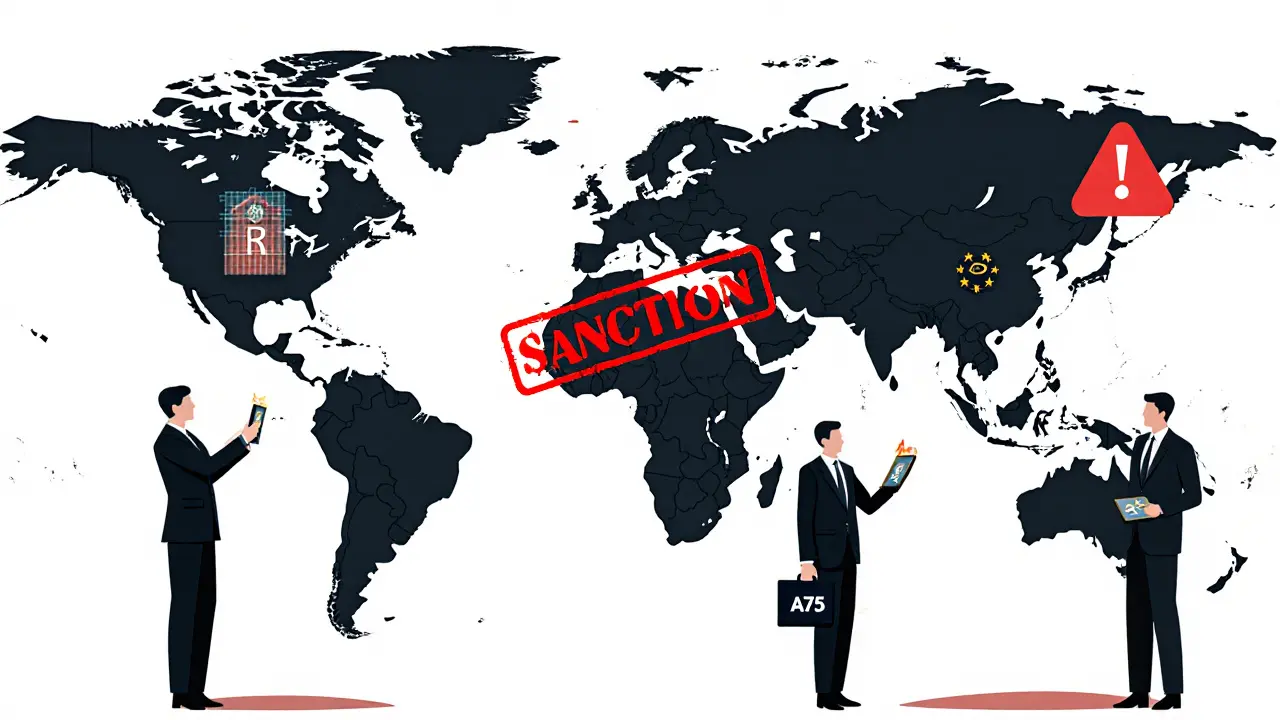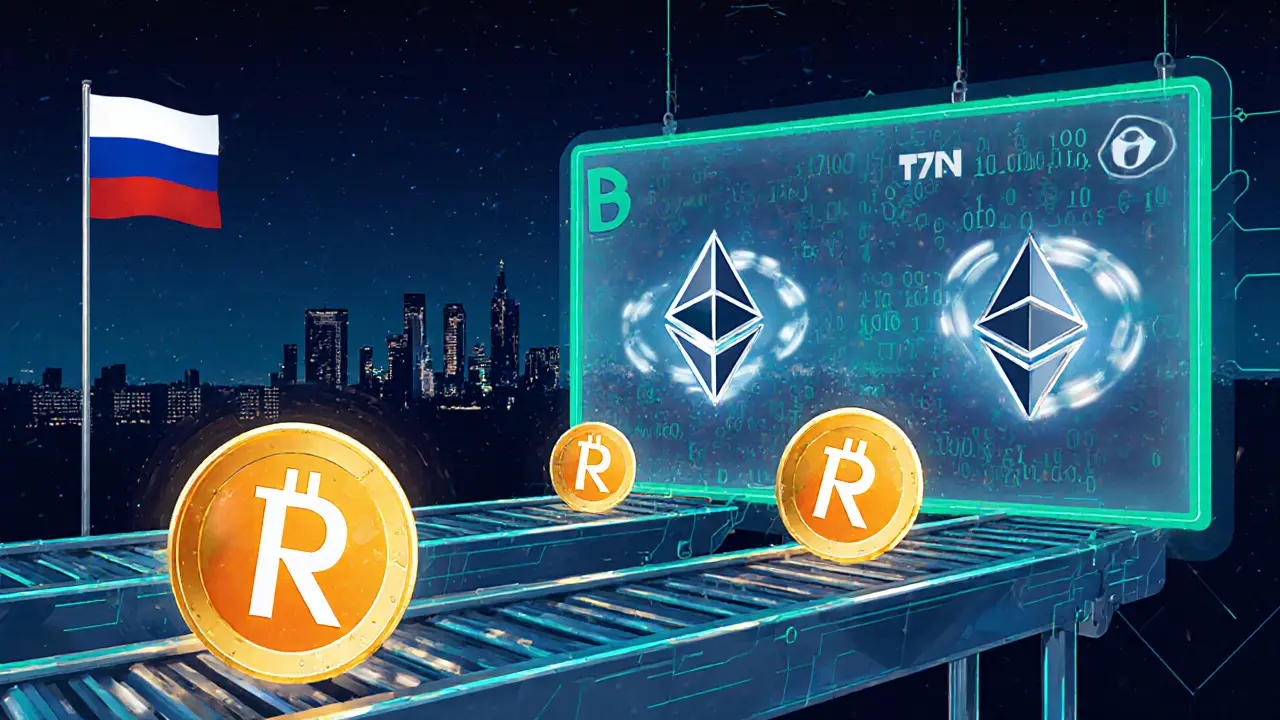Russian Crypto Sanctions Evasion Checker
Check Exchange or Token
How to Spot Sanctions Evasion
- Exchanges that emerge right after sanctioned platforms
- Token names that mimic ruble symbols (e.g., A7A5)
- Large stablecoin inflows to Kyrgyzstani banks
- Platforms claiming compliance while serving same client base
Enter an exchange or token name to check its sanctions status
When looking at the Russia's cryptocurrency sanctions evasion network a multi‑layered system that moves rubles through digital assets to sidestep Western restrictions, the picture looks like a high‑tech money‑laundering factory.
Why crypto became Russia's go‑to shortcut
Western banks stopped processing large‑scale Russian transfers after the 2022 invasion of Ukraine. Without traditional correspondent banking, Russia needed an alternative that could move value across borders quickly and without a paper trail. Digital assets fit the bill: they’re borderless, can be programmed to hide origins, and many jurisdictions still struggle to enforce sanctions on blockchain activity.
The centerpiece: the A7A5 token
The most visible piece of the puzzle is the A7A5 token a ruble‑backed cryptocurrency that runs on both TRON and Ethereum. Launched in early 2025 by a Kyrgyz‑registered firm, it has already processed roughly $9.3billion in four months. The token acts as a bridge: Russian entities swap roubles for A7A5, then move the digital asset to any exchange that supports TRON or Ethereum, effectively turning a sanctioned currency into a tradeable crypto.
Because A7A5 lives on two blockchains, it can dodge a single‑chain crackdown. If regulators freeze activity on Ethereum, the TRON side stays alive, and vice‑versa. This redundancy is a hallmark of modern crypto sanctions evasion tactics.
From Garantex to Grinex: the exchange shuffle
Initially, Russia relied on Garantex a crypto exchange sanctioned by the United States in 2024. When the U.S. Secret Service seized its assets on March62025, Garantex staff quietly migrated user deposits to a new platform they called Grinex an exchange advertised as a response to sanctions against Garantex. Within weeks, Grinex was handling billions of dollars in crypto flow and was itself added to the OFAC sanctions list for being owned by Garantex.
In 2025 the same team launched Exved a re‑branded exchange that claims full compliance while still serving the same client base. The pattern shows a classic “sanctions‑evasion shell”: shut down one entity, spin up another, and keep the money moving.
| Exchange | Sanction status (2025) | Primary blockchain(s) | Annual crypto volume* ($bn) | Notes |
|---|---|---|---|---|
| Garantex | US OFAC‑listed (Mar2025) | Ethereum, Binance Smart Chain | 2.1 | Original hub for Russian fiat‑to‑crypto swaps |
| Grinex | US OFAC‑listed (Jun2025) | TRON, Ethereum | 3.8 | Created by former Garantex staff; handles A7A5 |
| Exved | Under investigation (Sep2025) | TRON, Polygon | 1.5 | Re‑branded front; claims KYC compliance |
*Based on leaked transaction data and blockchain analytics (Elliptic, 2025).

The banking bridge in Kyrgyzstan
The crypto side needs a way to turn digital tokens back into hard cash for weapons, equipment, and payroll. That’s where Capital Bank a Kyrgyzstani bank headed by Kantemir Chalbayev enters the story. The bank processes crypto‑derived payments, converting them into dollars or euros that can be sent to Russian defense contractors.
Chalbayev’s name shows up in dozens of offshore company filings linked to A7A5 wallets. Analysts say Capital Bank acts like a “crypto‑to‑fiat gateway,” allowing sanctioned Russian entities to bypass traditional SWIFT routes.
Scale: numbers that tell the story
Leaked documents from September32025 (the IlanShor cache) reveal that A7A5‑related wallets have received about $8billion in stable‑coin transfers over the last 18months. Stablecoins such as USDT and USDC are the preferred vehicle because they can be moved instantly and then swapped for A7A5 on Grinex.
Elliptic’s analytics show a spike in “high‑risk” addresses: from an average of $200million per month in early 2024 to nearly $1.2billion per month by mid‑2025. The bulk of that activity ties back to the three exchanges listed above.
International pushback
Western governments have started to strike back. The United Kingdom announced on October32025 a coordinated raid on Grinex, Exved, and the A7A5 infrastructure, adding them to the UK’s sanctions list of over 2,700 Russian entities.
The European Union’s 19th sanction package, adopted in June2025, explicitly bans transactions on any crypto platform that facilitates the conversion of Russian roubles into digital assets. This was the first EU measure that targets a specific “dirty crypto” scheme.
In August2025, FATF the Financial Action Task Force warned that virtual assets are increasingly used by state‑backed actors for illicit financing, citing Russia’s network as a prime example.

Impact on the broader crypto industry
Compliance firms are scrambling. Elliptic a blockchain analytics company now flags A7A5 transactions on both TRON and Ethereum, allowing exchanges and wallet providers to block or monitor those flows.
At the same time, legitimate projects worry about over‑regulation. The “crypto‑laundromat” narrative has prompted some policymakers to consider blanket bans on privacy‑focused tokens, which could hurt DeFi innovators.
What’s next? Future trends and risks
Oxford Analytica’s September2025 report predicts that Russia will keep expanding its crypto toolkit, developing new tokens and forging deeper ties with offshore financial hubs. However, the cat‑and‑mouse game is accelerating: each new sanction drives faster technical work on blockchain tracing, AI‑driven pattern detection, and cross‑border law‑enforcement coordination.
For observers, the key takeaway is that crypto is no longer a fringe hobby for money‑launderers; it’s a central pillar in a state‑level sanctions‑evasion strategy. Keeping up means watching token launches, exchange migrations, and the evolving legal landscape in real time.
Quick checklist to spot Russian crypto evasion
- Watch for token names that mirror Russian ruble symbols (e.g., A7A5).
- Monitor exchanges that emerge from a recently sanctioned platform.
- Flag large stable‑coin inflows into wallets linked to Kyrgyzstani banks.
- Cross‑reference transaction timestamps with known sanction dates.
- Use analytics tools that screen TRON and Ethereum for high‑risk assets.
Frequently Asked Questions
How does the A7A5 token differ from regular stablecoins?
A7A5 is backed by the Russian ruble and deliberately runs on two blockchains (TRON and Ethereum) to create redundancy. Unlike USDT or USDC, it is designed to move sanctioned roubles into a crypto form that can slip through Western banking blocks.
Why did Garantex rebrand as Grinex instead of shutting down?
The staff wanted to preserve the existing user base and the liquidity pipelines that fed Russian entities. By launching Grinex quickly, they could transfer deposits, keep the token flow alive, and stay one step ahead of sanctions.
What role does Capital Bank play in the scheme?
Capital Bank acts as a fiat‑on‑ramp. It receives crypto‑derived payments, converts them into traditional currencies, and routes the money to Russian defense contractors, effectively bridging the digital‑to‑physical money trail.
How are Western regulators trying to stop these crypto channels?
They are adding the exchanges and tokens to sanctions lists, requiring crypto‑service providers to screen for A7A5 and related addresses, and expanding AML/KYC rules to cover cross‑chain activity. The UK, US, and EU have all issued coordinated directives in 2025.
Will this crypto evasion model work forever?
Not likely. As analytics improve and more jurisdictions cooperate, the cost of building and maintaining such a network rises. Still, short‑term gains keep the model attractive, so we’ll see more sophisticated tokens and quicker exchange swaps.


Author
Ronan Caverly
I'm a blockchain analyst and market strategist bridging crypto and equities. I research protocols, decode tokenomics, and track exchange flows to spot risk and opportunity. I invest privately and advise fintech teams on go-to-market and compliance-aware growth. I also publish weekly insights to help retail and funds navigate digital asset cycles.